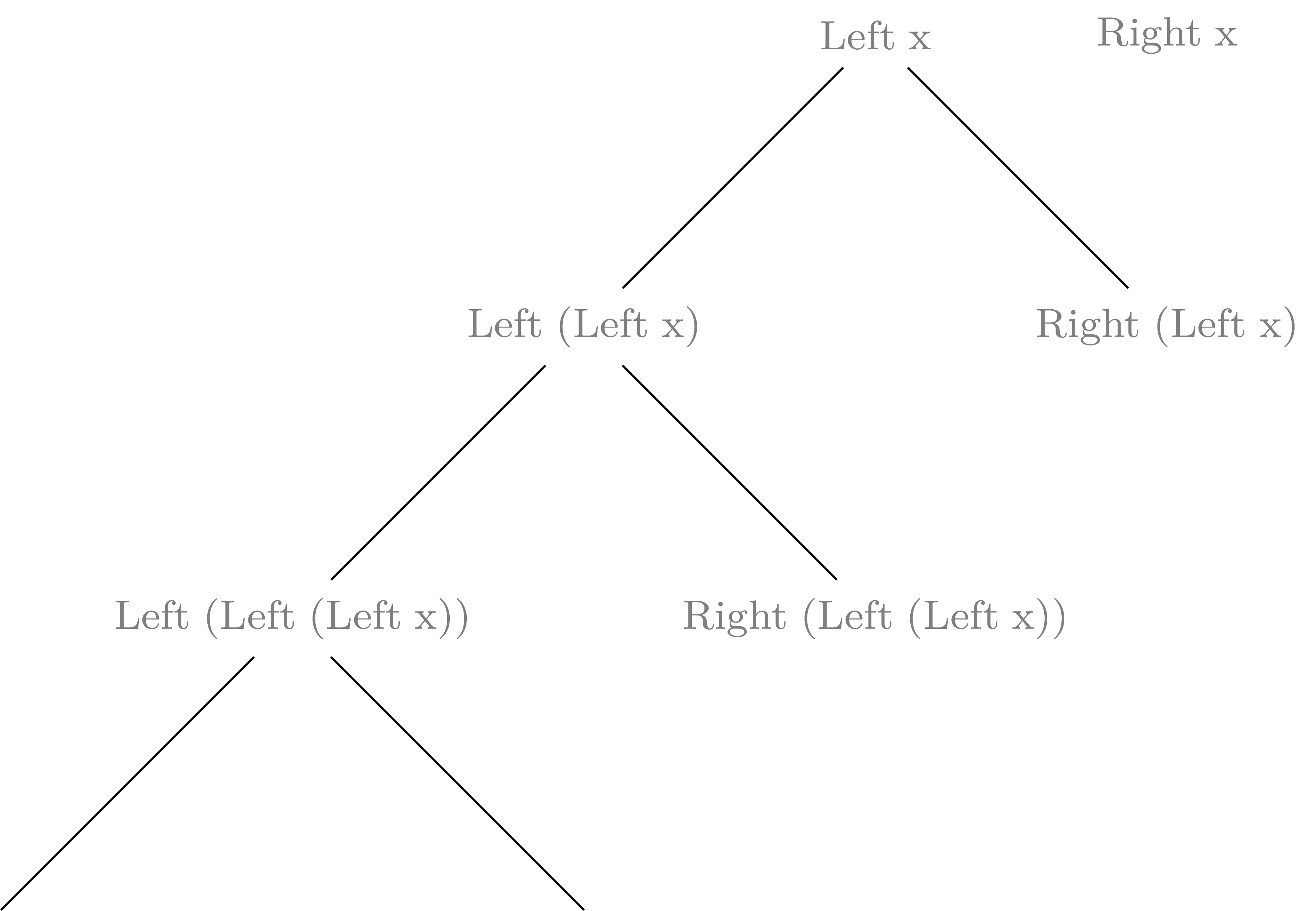Peano Algebras in Haskell
Universal
algebra is a field of mathematics which deals with
general algebraic structures. Much of classical algebra is
about groups (e.g. integers with addition, or rotations of
a plane), rings (e.g. the ring of integers with addition
and multiplication), fields (e.g. real numbers, or complex
numbers, where one multiplicative inverses of non
0 elements exists). Universal algebra deals with more
general structures like that. Every algebra has the
underlying universum - a set of numbers and
a set of operations. The operations can have different
arity, i.e. number of arguments. Examples include constants
- operations of arity 0, or multiplication, addition of
integers - arity 2, or inverse - arity 1.
Peano algebras
Let’s take as an example the algebra of natural numbers using Peano axioms. It has one constant - let’s call it $0$ and one operation of arity 1 - the successor function $s$. In Universal Algebra one can consider all of the algebras which has this set of operations and satisfies the Peano axioms, but let us skip the following two:
-
the injectivity axiom of $s$:
$$ s(m) = s(n) \Rightarrow m = n $$
$$ \not\exists_n s(n) = 0 $$0is not a successor of any element:
Otherwise there would be only one algebra to consider - natural numbers – at the end Peano was looking for axiomatic formulation of natural numbers, hence the two requirements.
Let us call algebras which satisfy these axioms Peano algebras. One example is the set of natural numbers $\mathbb{N}$, where the successor is defined as $s(n) = n + 1$. This is a free algebra with one generator. What it really means is that all elements can be generated from $0$ and the operation $s$, and that there is no relation/equations between elements. A non free example would be the set of $\mathbb{N}/2\mathbb{N} \simeq \{0,1\}$, where $s(0) = 1$ and $s(1) = 0$ (this breaks the two original Peano axioms that that we excluded).
Peano algebras in Haskell
It turns out that Peano algebras are often met in Haskell
code. Let’s take Haskell's Maybe
type. It has
two constructors Nothing and
Just, where Nothing has kind $*$ (arity
0) and Just has kind $*\rightarrow *$ (arity
1); like $0$ and $s$ in the Peano algebra case. And indeed
it forms a
Peano Algebra,
for any type $a$. It’s elements are:
Unit, Maybe Unit, Maybe (Maybe Unit), ...
This algebra is free, there are no relations (or equalities
of types) among all algebras of this type. But relations
are very useful, and it turns out that Haskell provides
them using monads. For example for the Maybe
type we have
(Just (Just x) >>= id) == Just x
for every x :: a. Note that this equation is
on the level of terms rather than types.
This way when you use Maybe in a monadic
context you use it as $\mathbb{N}/2\mathbb{N}$ rather than
the free algebra $\mathbb{N}$. Knowing these relations is
the essence of knowing how a given monad works.
There are other examples of a Peano algebras in Haskell.
The Either monad
provides an example with two generators - or two data constructors
Left and Right. As a Peano algebra it can be
represented as a binary tree where the successor of
Right x is Right (Right x) and
the successor of Left x is
Left (Left x) (for some type x). Then the
Either monad provides only one relation:
(Right (Right x) >>= id) == Right x
and there is no relation for the Left
constructor:
(Left (x :: Either a) >>= id) == Left x
for every term x :: a. The corresponding Peano
algebra has the form:
